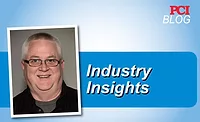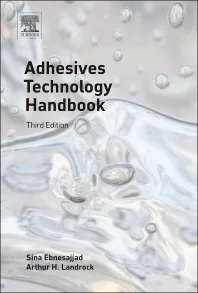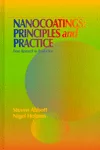Why Grind It?
Paint Manufacturing Techniques
Improvements in the ease of pigment dispersion, particularly white pigment, have permitted the use of lower sheer equipment (high-speed dispersers/media mills) in the manufacture of paint. High-speed dispersers are mechanically simple, easy to operate and formulate for. Cycle times for pigment dispersion are typically 30 to 60 min., followed by a 15- to 30-min. letdown. With short cycle times, these dispersers are well suited for the rapid production of paint based on inorganic pigments. The high-speed disperser has become the equipment of choice to produce architectural and other types of coatings. This has fundamentally changed the energy profile under which pigments are dispersed. High-speed dispersers have a lower shear profile, so they are not recommended for the dispersion of organic pigments. But in low-energy dispersers, variations in a pigment’s rate of color and strength development are more evident, particularly when used in combination with other pigments. The result is that the dispersion characteristics of each component in a pigment mixture and the timing of the production process now have a substantial impact on color performance.
Pigments in Paint
Before discussing the specifics of pigment dispersion and its effect on color development, a short review of the requirements to adequately disperse pigments is appropriate.Paint is typically formulated using a variety of pigments, each of which plays an essential role in developing the properties of the paint. Table 1 lists typical pigments and their function in a paint formula.
While each of these pigments is not necessarily present in every formula, some combinations of the most important ones are — in particular chromatic, white, and filler pigments. Even a simple mixture of several pigment types is not uncommon. This provides the formulator with a significant challenge in meeting the requirements for optimal dispersion, for each pigment individually and for all collectively. Such factors as widely differing particle sizes, surface chemistries, degrees of agglomeration and energy requirements make it difficult to arrive at the ideal dispersion formulation.
The requirements for achieving a full dispersion are chiefly influenced by the pigments’ chemical composition and primary particle size. Pigments are broadly categorized as either inorganic or organic. Inorganic pigments are metal salts or oxides and are hydrophilic. Organic pigments are derived from petrochemical sources and are hydrophobic in nature. Table 2 classifies several common pigment types by their hydrophobic or hydrophilic nature.
The first step in the dispersion process is wetting. The nature of the pigment and the medium will determine the need for and type of surfactant. Hydrophilic pigments such as titanium dioxide (TiO2) spontaneously wet in aqueous media, and generally only dispersants are required to stabilize them. But dispersants alone are not sufficient for fine-particle organic pigments. Additionally, the ideal hydrophile-lipophile balance (HLB) value for the wetting of inorganic pigments differs from those required for organic pigments, as illustrated in Table 3.
When pigment types are intermixed, surfactant combinations are generally less than optimal due to the differing wetting requirements. Complete dispersion of any pigment requires the optimum surfactant blend for wetting and stability. An optimized surfactant package can be most easily achieved when dealing with a single pigment or mixtures of pigments of a similar chemistry. This optimization is difficult to achieve in the inorganic-organic pigment mixtures normally encountered in paint.
Organic pigments generally require a surfactant to wet their surface. The dispersant system that wets TiO2 in an aqueous dispersion does not adequately wet an organic pigment. Only the addition of a wetting agent, such as an ethoxolated nonylphenol, is effective.
Color Development Rate
The tinting value of a pigment is dependent on its primary particle size and state of dispersion. It has been recognized that the mixed grinding systems are not the most effective method to disperse pigments, particularly where particle sizes and surface chemistries are significantly different. This section discusses the results of a study made of the dispersion rate of various pigments and how this variability affects the color of paint.The relative dispersion rate of several organic and inorganic pigments was studied, using a batch-type media mill. Strength development was used as a measure of dispersability. Each pigment was first premixed on a high-speed disperser for 15 min. and then media milled for as long as 450 min. The formulations were similar to those used in the milling stage of paint manufacture and consisted of a mixture of pigments, surfactants, fillers, and liquids with no resin present. Samples were withdrawn at regular intervals, and the rate of strength development, or the dispersion rate of the pigment, was determined.
The inorganic pigments tested reached their full strength during the premix period or in less than one hour milling time. The organic pigment types proved more variable in strength development and will be the focus of the following discussion.
Figure 1 shows the rate of dispersion for two red pigments, a naphthol red and a quinacridone red. The quinacridone pigment develops its strength at a uniform rate and reaches full strength after 225 min. The naphthol red’s strength increases with time, although the strength development plateaus at 120 min. and does not significantly increase through 300 min. There is then a rapid increase in strength development, with full strength developing after 375 min.
If these pigments were co-milled, the dispersion time required would have to be increased significantly to ensure the full dispersion of the naphthol red. Process time in this instance would have to be extended 100 min. to avoid the variation in color that would result from the differing dispersion rates of the pigments. The differing dispersion rates make the slower developing pigment the rate-controlling ingredient.
Figure 2 compares the dispersion curves of two yellow pigments. One, a Hansa yellow, is dispersed singly, and then it is co-dispersed with a toning yellow pigment to create a medium yellow. The Hansa yellow pigment performs as expected with a regular increase in strength, and reaches full dispersion at 300 min. The addition of the toning pigment changes the dispersion curve, creating a large region from 100 to 200 min. with no strength gain followed by a rapid increase to full strength.
It is obvious that the dispersion rate of the Hansa pigment is adversely affected by addition of a second, harder-textured pigment.
Dispersion curves of phthalocyanine green and blue pigments are shown in Figure 3. Both pigments performed as expected. The curves are well behaved and confirm that although both pigments are based on phthalocyanine chemistry, the green is the more easily dispersible pigment.
All this is interesting, but what does it mean in the practical situation of achieving a desired color? A color was formulated that can be described as moss green using three pigments in a white base. The components are phthalocyanine green, a Hansa yellow, and naphthol red at a ratio of 1:4:1. Figure 4 is a composite of the individual dispersion curves for the three pigments used in the formula. The dispersion rate curve of each pigment is quite different as is the time required to achieve complete dispersion.
Color mixing theory states that the color of a mixture is the result of the sum of the K/S values of each pigment in that mixture multiplied by the concentration. The general form of this equation is:
This equation shows that variations in concentration — either real or resulting from variation in strength development — will affect the color produced. Colors were prepared using the pigment strength development values shown in Table 4 at three time intervals (100, 250 and 450 min.).
Visual comparisons show a significant difference between the colors prepared at various dispersion times. The colors prepared at the 100 and 250 min. dispersion strength values times were much brighter, reflecting the underdevelopment of the red pigment and the slow development of the yellow. Color measurements of the colors produced at the test time intervals were made. The measurements were consistent with what was predicted by the dispersion curves. Table 5 summarizes these measurements.
This demonstrates how color varies with dispersion time and that the final color is only achieved when each pigment in the mixture is fully dispersed. The simple solution to achieving consistent color would be to extend dispersion time until all pigments are fully developed. Timing the end of the process will require a knowledge of how each pigment affects the dispersion of the others, and how the dispersability of different batches of the same pigment vary.
Using extended dispersion time, however, as an approach to developing color will result in unnecessarily long processing times. If the process is stopped when a pigment is in the transition portion of its dispersion curve, then small changes in timing will result in significant color differences. Operators will spend significant time shading the batch, and this will be complicated by color development that occurs during the shading process.
Amore practical approach to achieve this color would be to disperse the easily ground pigments (white) and then tone to shade with dispersions. In the previous example, processing using dispersions would have been 120 min., rather than the 450 min. required grinding pigments.
Why Grind It?
Using dispersions rather than grinding pigments optimizes the production process and lowers process times, thereby providing better use of equipment and personnel. Effective capacity would be expanded without capital investment. It is here that dispersions prove effective in replacing pigment mixtures to achieve accurate color development. Dispersions provide consistent color value and improved first-time color due to the consistent strength and optimal dispersion of the pigment. This optimal dispersion of the pigment will also translate into performance benefits and help avoid such application problems as “picture framing.” Picture framing refers to a color difference (usually darker) relative to the rest of the painted surface that occurs when different methods of applications are used, i.e., brushing or rolling.Future of Paint Coloring
In the future, it is anticipated that the tinting of paint will become a coordinated system using a combination of pigments, dispersions and universal colorants. Tinting paint at the point of sale will become the most cost-effective method. The tinting of paint in the factory will be used to supplement high-volume color sales, but the overall use of prepackaged paint colors is likely to diminish. This trend will bring the use of colorants to the factory floor to provide continuity between store- and factory-tinted paint but also to reduce costs.We can also expect to see specialized dispersions coordinated with a color system, rather than tinting with a random set of pigments. These in-plant-tinting colors will use the same pigments as the store colorants for improved coordination.
Pigments will be used less to provide the final color of paint, but to prepare structured bases to be tinted with dispersions or colorants. Special purpose dispersions will be used for unique colors, such as metallic, and for tinting specific resins, including epoxies or polyurethanes. Universal colorants will be the choice for point-of-sale tinting, which in turn will increase the use of integrated dispersion systems and point-of-sale formulas as recipes for in-plant tinting.
The many reasons why dispersions have gained a place in tinting paint can be summarized in one sentence: When compared to pigment grind, they provide convenient, predictable, reproducible, flexible and cost-effective colors.
The author would like to thank Michael Kolakowski, Pilot Plant manager at CREANOVA Inc., for supplying experimental data.
For more information on color development of mixed pigments, contact CREANOVA Inc., 2 Turner Place, Piscataway, NJ 08855; phone 732/981.5000; fax 732/981.5033.
Looking for a reprint of this article?
From high-res PDFs to custom plaques, order your copy today!







